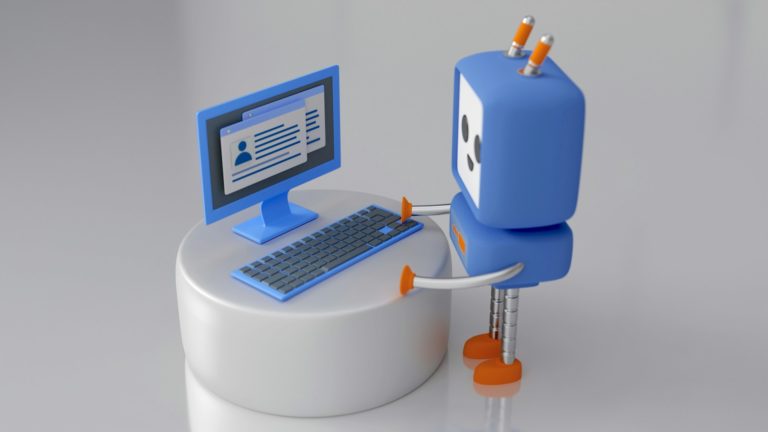5 Travel Marketing Trends & Top Tips on How to Use Them
The Great British weather was working incredibly hard to distract us for most of the last 2 months, but if you jumped on a plane to literally any other destination in the world, you’d have been reminded that we were right in the middle of the summer season, a time when travel plans often take centre stage.
Three years on and while we’re still navigating a post-pandemic world, travel has regained its importance. A recent survey by YouGov found that 35% of respondents find travel more vital since the pandemic, and almost three-quarters (67%) are planning a leisure trip in the next year. So, there’s no better time to be discussing the innovative content marketing strategies redefining how brands engage their audience. Here, we look at those trends shaping the travel industry and how brands can leverage them to better connect with travellers.
1. Social Media Is the New Search Engine
Social media platforms have become an essential tool for modern travellers in their search for inspiration and advice. Google, once the epitome of search engines, has become so ingrained in our culture that it’s now part of our everyday vocabulary, but perhaps not forever. According to web security firm Cloudflare, TikTok momentarily eclipsed Google as the world’s most popular domain in 2021. The change reflects a broader trend, especially among Gen Z, those born between 1997 and 2012. Remarkably, about 40% of Gen Z prefer to discover information on platforms other than Google.
But it’s not just Gen Z. As of 2022, 50% of Millennials and nearly 40% of Gen-Xers were active users of TikTok. And now social media is becoming the place we go to for news, updates, inspiration and more, all shared by the people we follow. With the likes of Reddit, TikTok, and Instagram fast replacing traditional search engines as the go-to source for travel recommendations, brands need to ensure that their presence on these platforms is more than just nominal.
For travel brands, this shift represents an opportunity to reshape their marketing strategies. Rather than viewing social media as a supplementary platform for younger generations, brands need to recognize it as a primary source of customer engagement. By actively engaging customers through user-generated content (UGC), real-time responses, and visually appealing stories, it’s possible to build a community and position yourself prominently in the minds of potential customers planning their next trip.
2. Influencers Aren’t Going Anywhere
Influencer marketing, while not a new phenomenon, has solidified its place in the content marketing strategies of many travel brands. This trend has been driven by the high levels of trust and authenticity associated with influencer recommendations. A striking 87% of individuals agree that YouTube creators offer advice they can rely on, and 93% of marketers have harnessed the power of influencers in their campaigns. Looking forward, 89% of these marketers plan to maintain or even increase their influencer marketing budgets in 2023.
However, with high engagement rates often come high costs. To overcome this hurdle, many brands are pivoting towards micro and nano influencers. These influencers, with followings ranging from 100 to 10,000, provide a cost-effective alternative to their more popular counterparts. The smaller following allows them to maintain closer relationships with their audience, fostering a sense of community and trust. As a result, their promotions carry a greater weight of authenticity.
With rates as low as $100 per post, compared to the hefty $10,000 upwards for larger accounts, you can effectively leverage this trust without breaking the bank. Brands should seek out influencers whose values align with their own to build the best partnerships.
3. Your Customers Are Your Greatest Influencers
While the power of influencers in content marketing can’t be denied, an often overlooked yet immensely influential group is your customer base. These individuals, although lacking the expansive reach of traditional influencers, provide an unrivalled level of authenticity. Customers have firsthand experience with your services, and their reviews, recommendations, and criticisms can often carry more weight than any influencer endorsement. Not only do these feedback mechanisms provide invaluable insights into customer needs and expectations, but they also serve as a persuasive marketing tool.
Intrepid Travel uses this strategy on its Instagram account with almost every post. Combining user-generated content with travelers’ real-life accounts of their adventures creates a powerful story that promotes the company without them ever having to explicitly ‘sell’ anything.
Brands should tap into this resource, to create an environment that encourages customers to share their experiences. A post-trip survey, a request for a review, or even incentivizing UGC can be effective tactics to help you leverage this trend. Establishing a two-way conversation with your customers not only enables them to express their opinion but also helps to promote your brand in the most genuine way possible. After all, an endorsement from someone who has invested their own money and experienced your service holds more value for prospective customers than if you have paid someone to test it out.
4. Think Video & Think Short
Since the rise of TikTok, Instagram Reels and YouTube shorts, short-form video content has muscled in on static images. A well-shot image of a stunning destination is no longer enough to hold the attention of the masses. Customers want to see exactly what they’ll be getting before they part with their money.
Take for example, Ryanair’s approach to TikTok. The airline shares humorous and relatable short-form content that resonates with audiences and pokes fun at themselves and their customers, garnering hundreds of thousands to millions of views per video. The aim of each post is not to sell flights, but to build a community of like-minded and potential customers. Conversely, Lonely Planet leverages Instagram Reels to spotlight various destinations, combined with valuable travel tips, positioning themselves as the go-to for travel insights in the same way their guides and books do – but in a more manageable and accessible format.
TikTok’s influence on travel decisions is also becoming increasingly evident. One example of this is the case of two relatively unknown destinations in Hainan, China that rapidly gained fame, attracting a significant influx of tourists, all thanks to TikTok exposure. After 65,000 likes on a short video of the sunrise at Hainan Tropical Rainforest National Park, visitor numbers increased by more than 700% in 2022 compared to the previous year.
However, mastering content creation for this platform isn’t straightforward. It requires a thoughtful approach, using social listening tools to identify trends and align with popular content. Brands must also bear in mind that video content comes with higher production costs. According to Hubspot, 31% of marketers in 2022 allocated between 21 to 40% of their total marketing budget to video content creation. For brands operating on a smaller budget, repurposing templates, and leveraging user-generated content can provide an effective solution. By creatively integrating these elements, you can produce engaging video content without the large price tag.
5. Travellers are More Conscious Than Ever
Sustainability is quickly becoming a concern for travelers. With the escalating climate crisis, highlighted by events as recent as the wildfires in Rhodes, travelers are seeking more responsible ways to explore the world. Tim Hentschel, CEO of HotelPlanner, said they have seen a surge in demand for eco-tourism. Travelers are not just looking for eco-friendly hotels and transportation options, but also seeking out travel experiences that include local philanthropic activities. Expedia’s recent Sustainable Travel Study confirmed this, reporting that 90% of consumers are actively seeking sustainable options while traveling.
For brands, the message is clear: if you offer sustainable options, activities, or amenities, travelers want to know about it. Expedia found that two out of three travelers are seeking more information to make informed choices, reflecting a shift in priorities. While price often remains a crucial deciding factor, the study shows that some are willing to sacrifice convenience and comfort for choices that positively impact the planet. Brands that align with these values, highlighting sustainable practices, promoting off-grid destinations, and advocating for authentic local experiences, stand to forge a deeper connection with their audience. The ultimate goal is to provide travelers with not just a memorable holiday, but one that allows them to travel in a way that respects and contributes positively to the environment and local communities.
Embracing Change: The Path Forward for Travel Brands
As the summer season unfolds and travel continues to rebound post-pandemic, brands have a golden opportunity to tap into evolving travel marketing trends. Whether embracing the surge in social media as a primary search engine, leveraging the authenticity of customer reviews or connecting with the growing eco-conscious traveler, adapting to these trends is paramount.
By aligning strategies with these shifts, travel brands can not only meet the varied demands of today’s traveler but forge stronger connections and stand out in a competitive market. The key lies in not just recognizing these trends but in intelligently and creatively integrating them into a holistic marketing approach that resonates with the modern traveler.






